When we emerged from the wilderness of the Boundary Waters in August, I bought myself a bracelet made from Aqua Terra Jasper to remind me of my amazing week. Water and land. Life-sustaining water and body-grounding earth. The colors of blue-green, sand, and reddish-brown swirled and intermingled on the beads, every one a distinct work of art that together embodied the look and feel of Nature’s offering to us in the Boundary Waters. The stone of peace.
Four weeks after leaving the peace of the Boundary Waters with our kids in far northeastern Minnesota, Chris and I traveled to the southwestern corner of the state to camp for the weekend with my Mom. We met at Blue Mounds State Park, just north of Luverne, in the county named Rock, which we quickly saw was merely an accurate description of the land. As we settled into our campsite—my Mom with her self-renovated retro camper and us in our little tent—we soon discovered that Aqua Terra would also be the most compelling environments of this prairie place.
Right behind our campsite was a short path through a few trees to a cliff of red rocks that overlooked a narrow, dammed lake of Mound Creek. It was the inhabitants of this aqua environment that captured my attention each dawn and dusk and serenaded us each night. With our late afternoon arrival and my mini-exploration, one creature stood in the shallow water in front of a field of waving cattails—a Great Blue Heron. He was statue-still, a little bent-over looking, shoulders drooping as his wings hung down in rest or resignation.
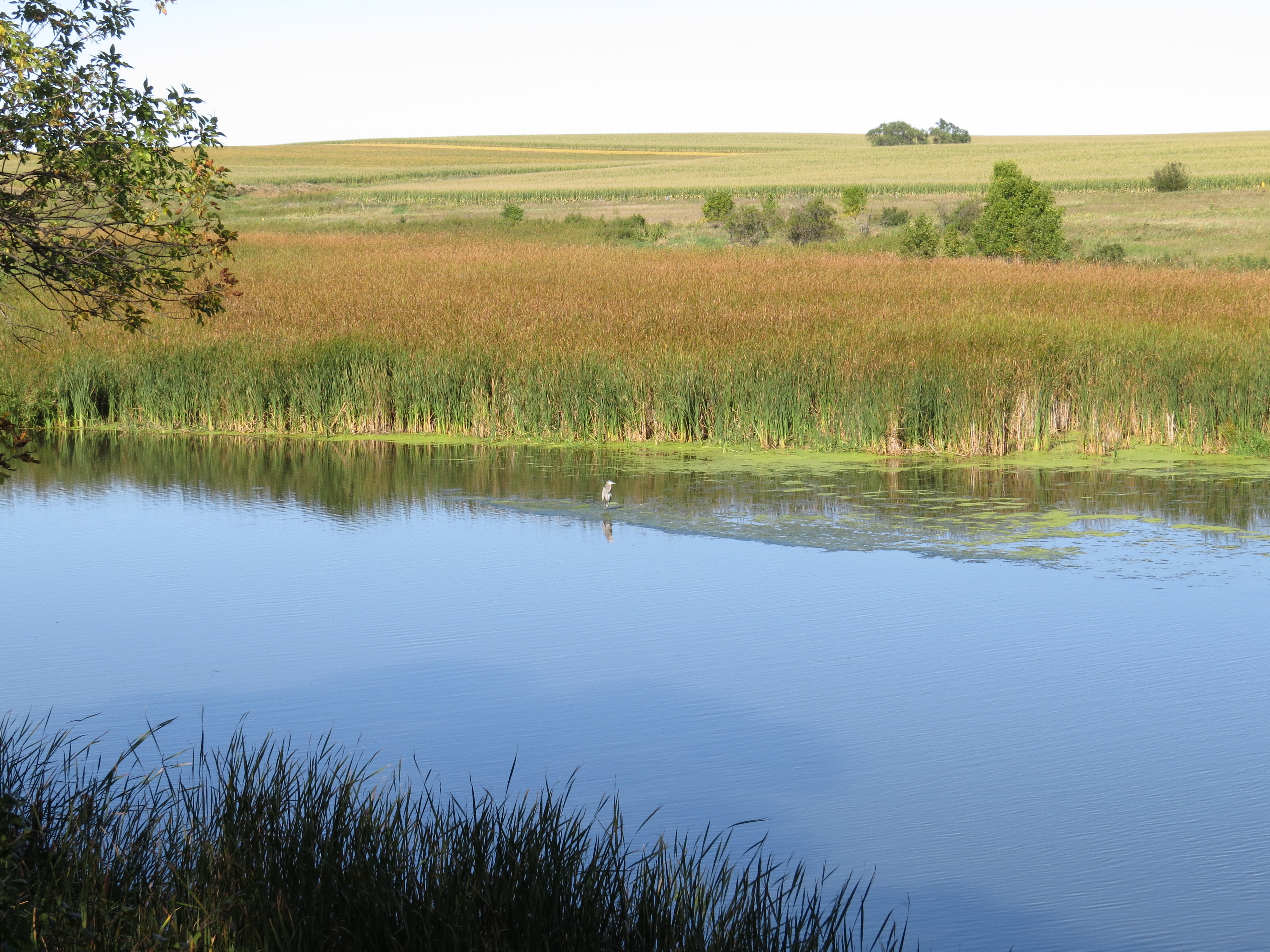

He had some unruly chest plumes, but also a tuft of down feathers at the back of his head—a young one, perhaps? His eyes closed and opened in his stillness.


Down the lake a ways, there stood another aqua-creature, again as still and quiet as a statue, and they seemed to be watching one another. A Canadian Goose stood rather awkwardly, one foot behind the other, with a bent head and neck looking in the direction of the heron. Beside her on the water were little piles of down feathers—at first I thought she had been preening herself, but that usually happens when the bird is relaxed, and she was not relaxed. Perhaps there had been a scuffle of territory between the two? They both stayed in the same position for all the minutes I watched them.

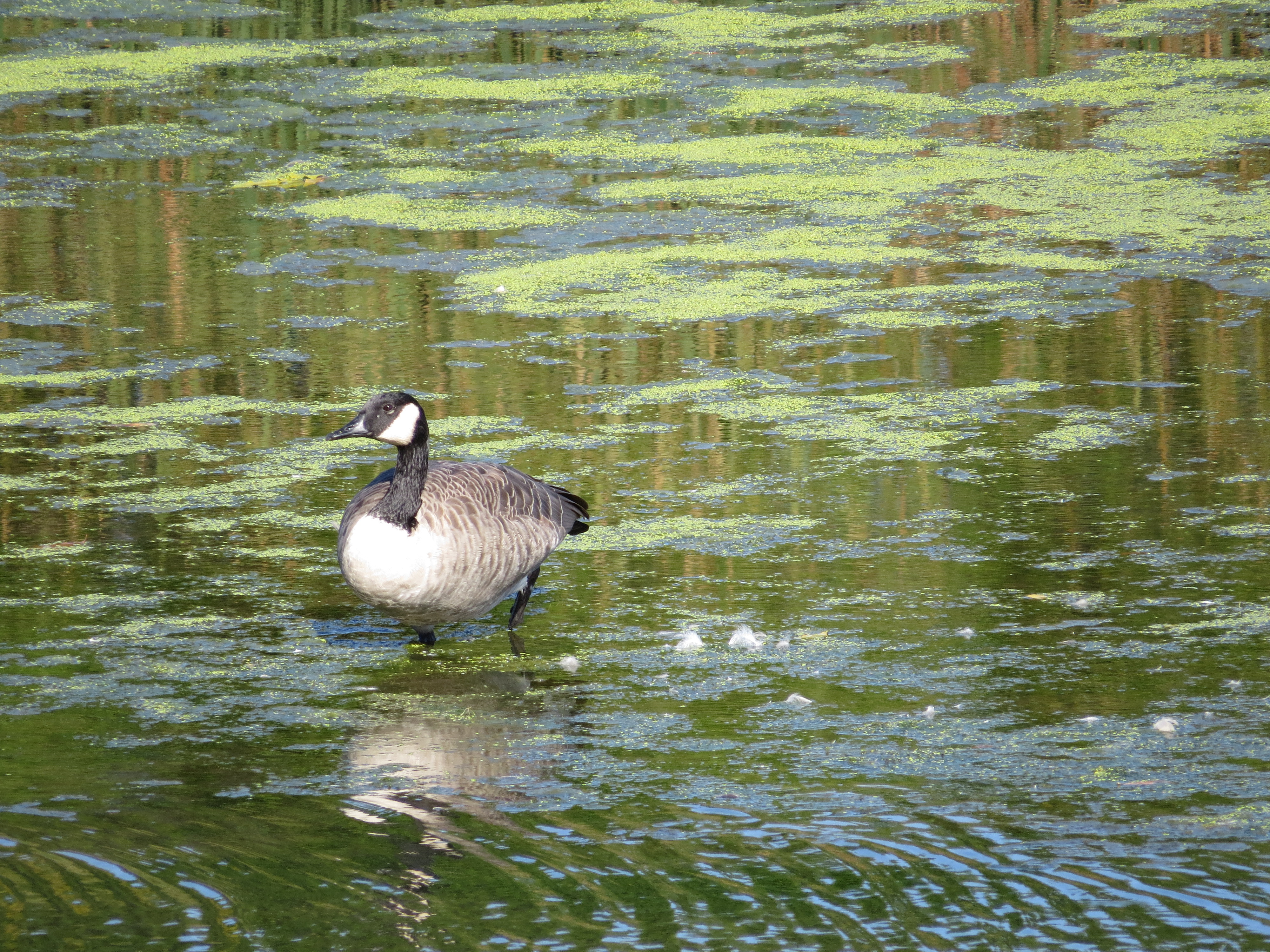
There were some waterfowl who seemed not to have a care in the world—a few immature Blue-Winged Teal (most likely.) Happy ducks swimming through duckweed.
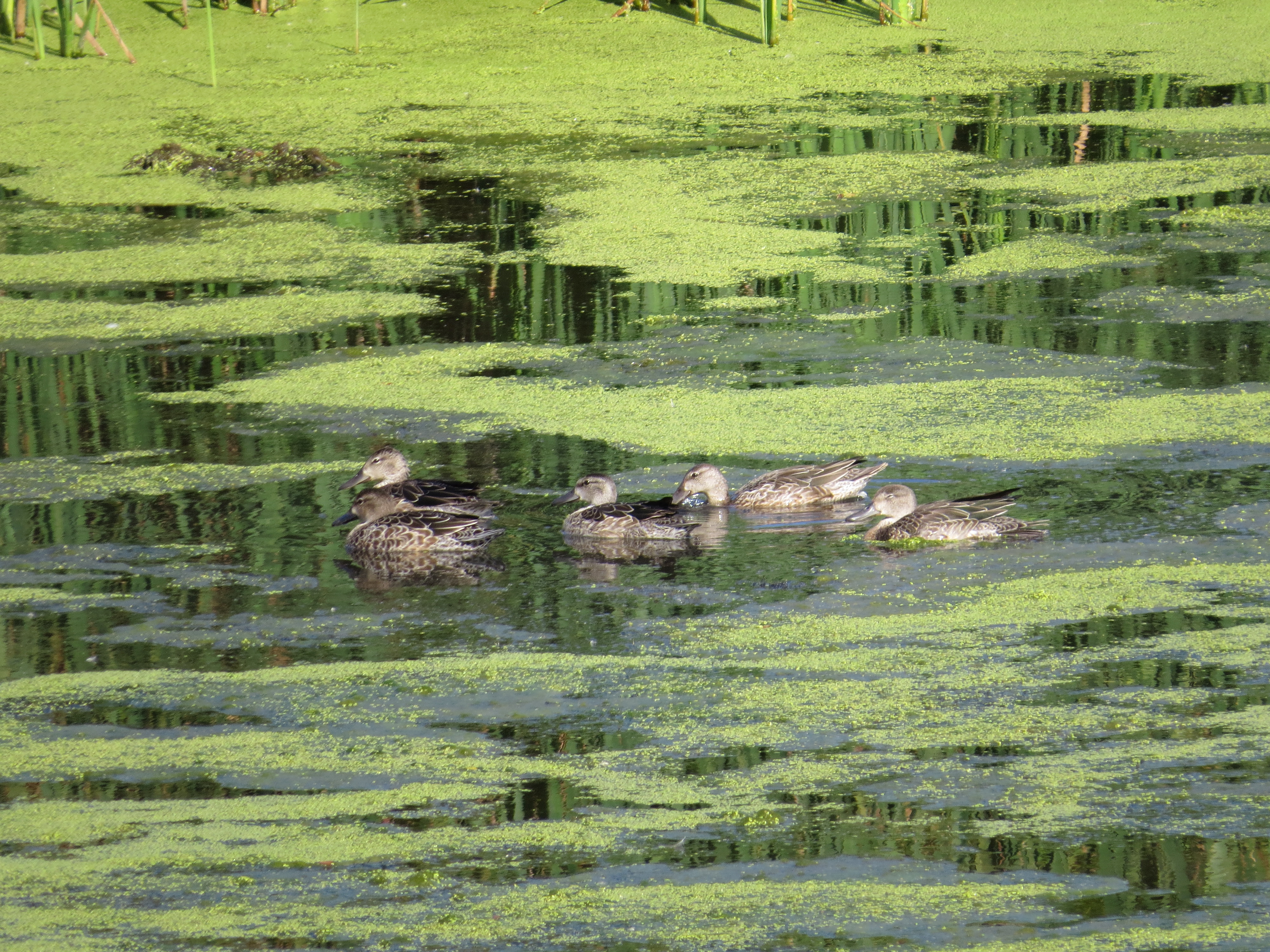
After our quick, light supper, we drove to the Bison viewing platform where the rocky, rolling prairie terra sustains a herd of over 100 bison, including the spring-born calves.

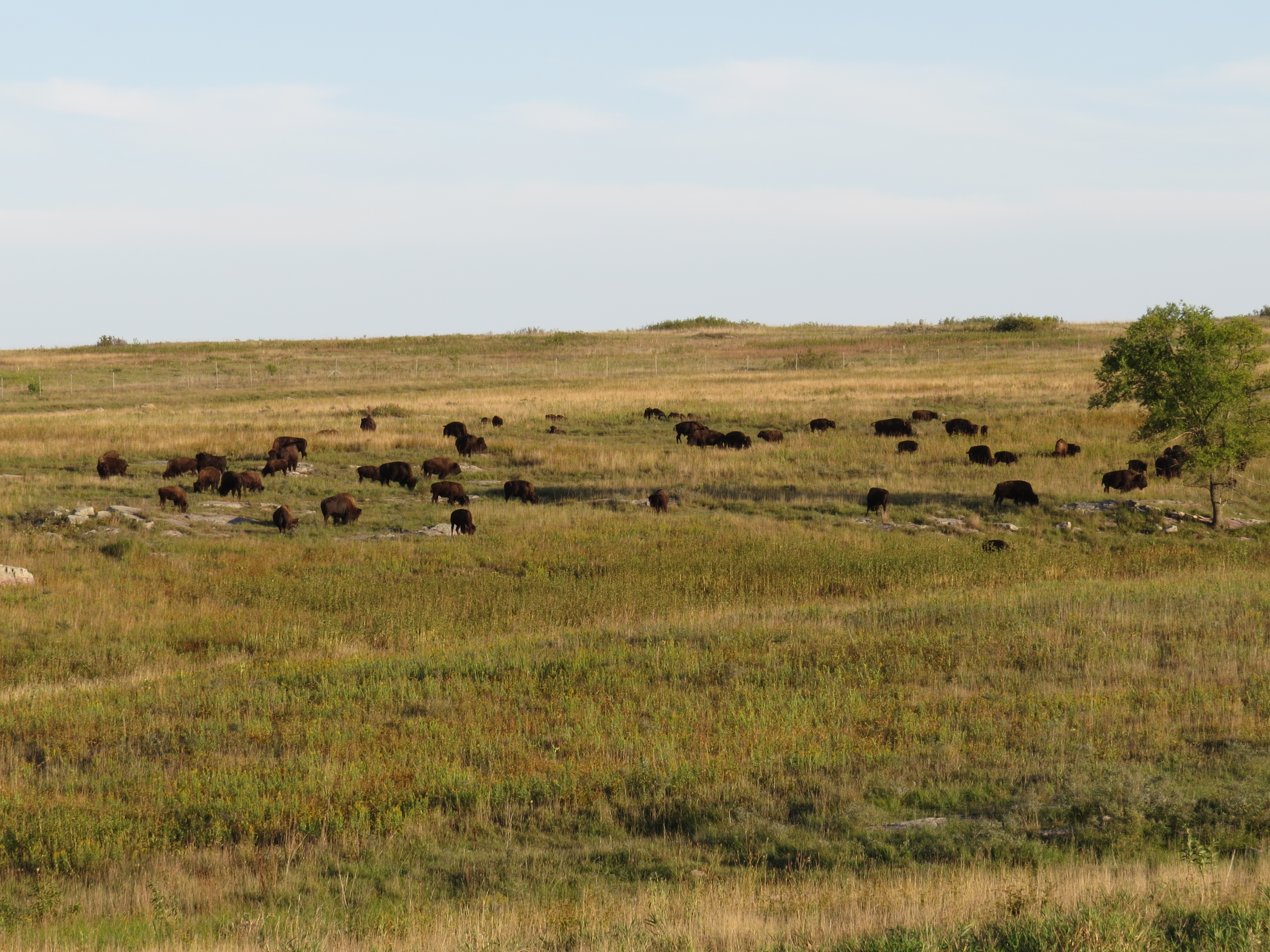

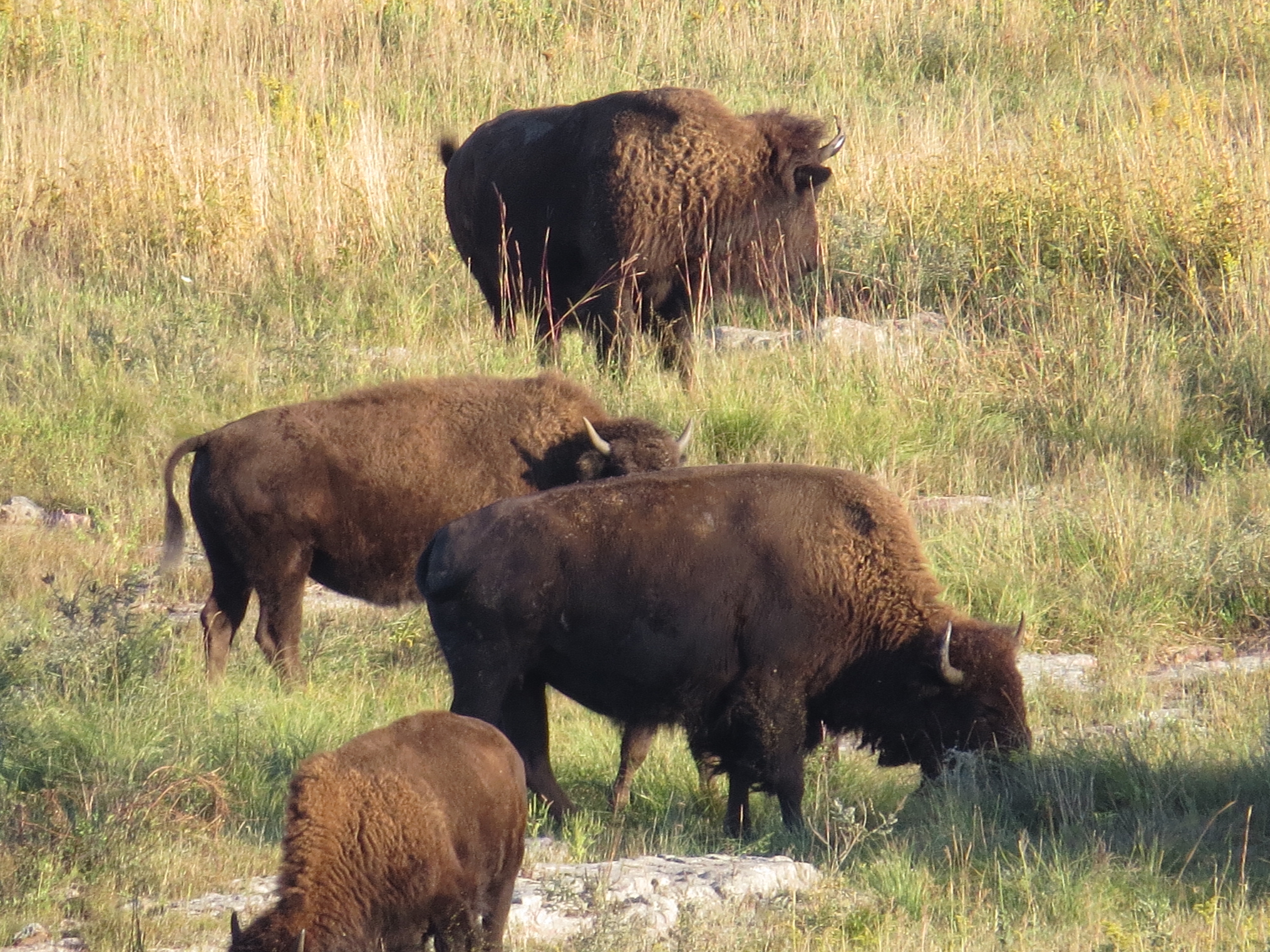
There were many outcrops of Sioux Quartzite rocks and boulders, pink to purple in color from the presence of iron oxide and millions of years of formation. Some of the boulders were as big as a buffalo or is the buffalo as big as a boulder?
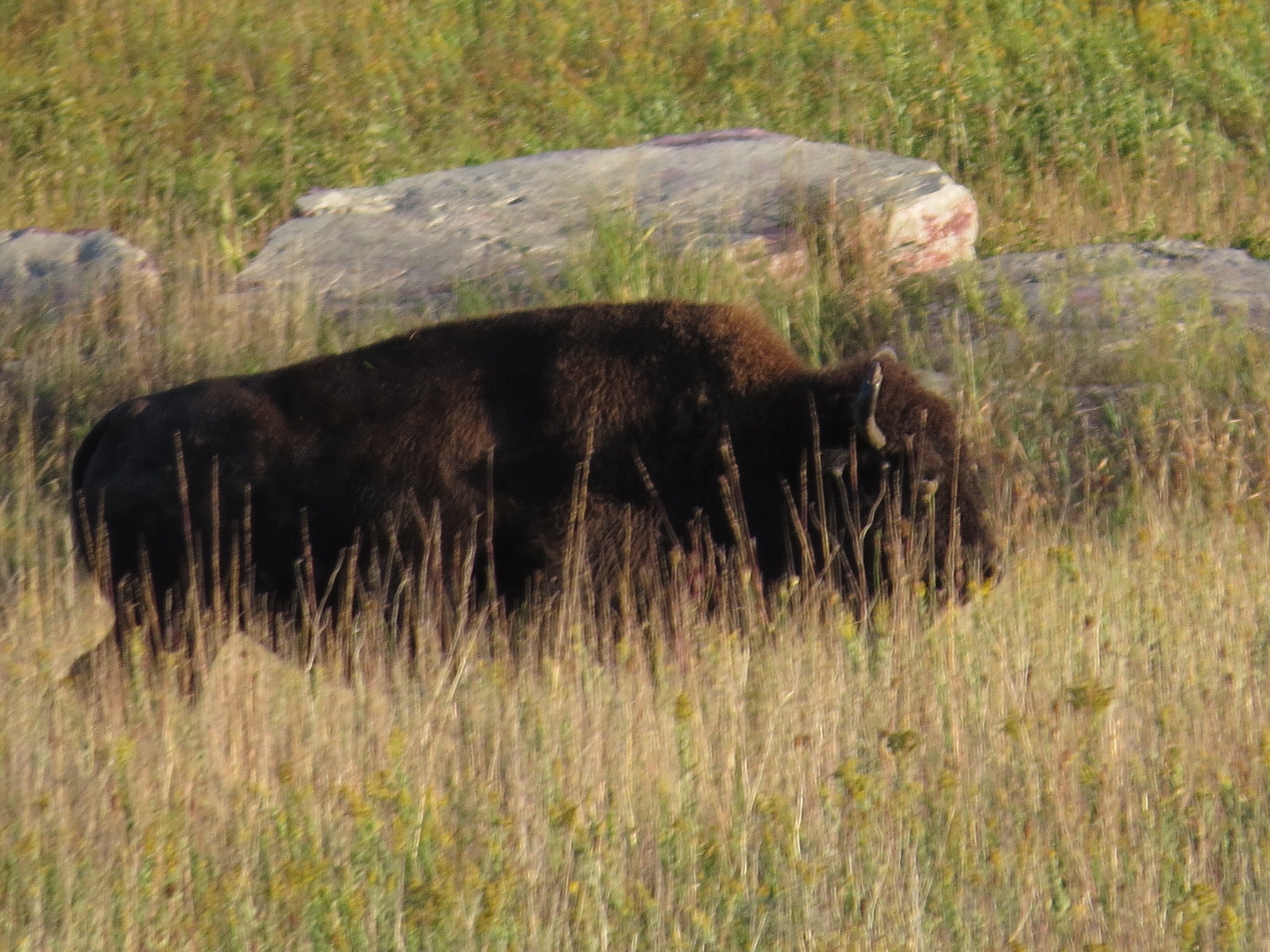
The boulders are used as ‘scratching posts’ for the bison and have been for many thousands of years. They rub their wooly heads and necks against the corner of the rocks, and in doing so, smooth the boulders to a shiny pink texture while relieving the itch of shedding their thick winter coats.
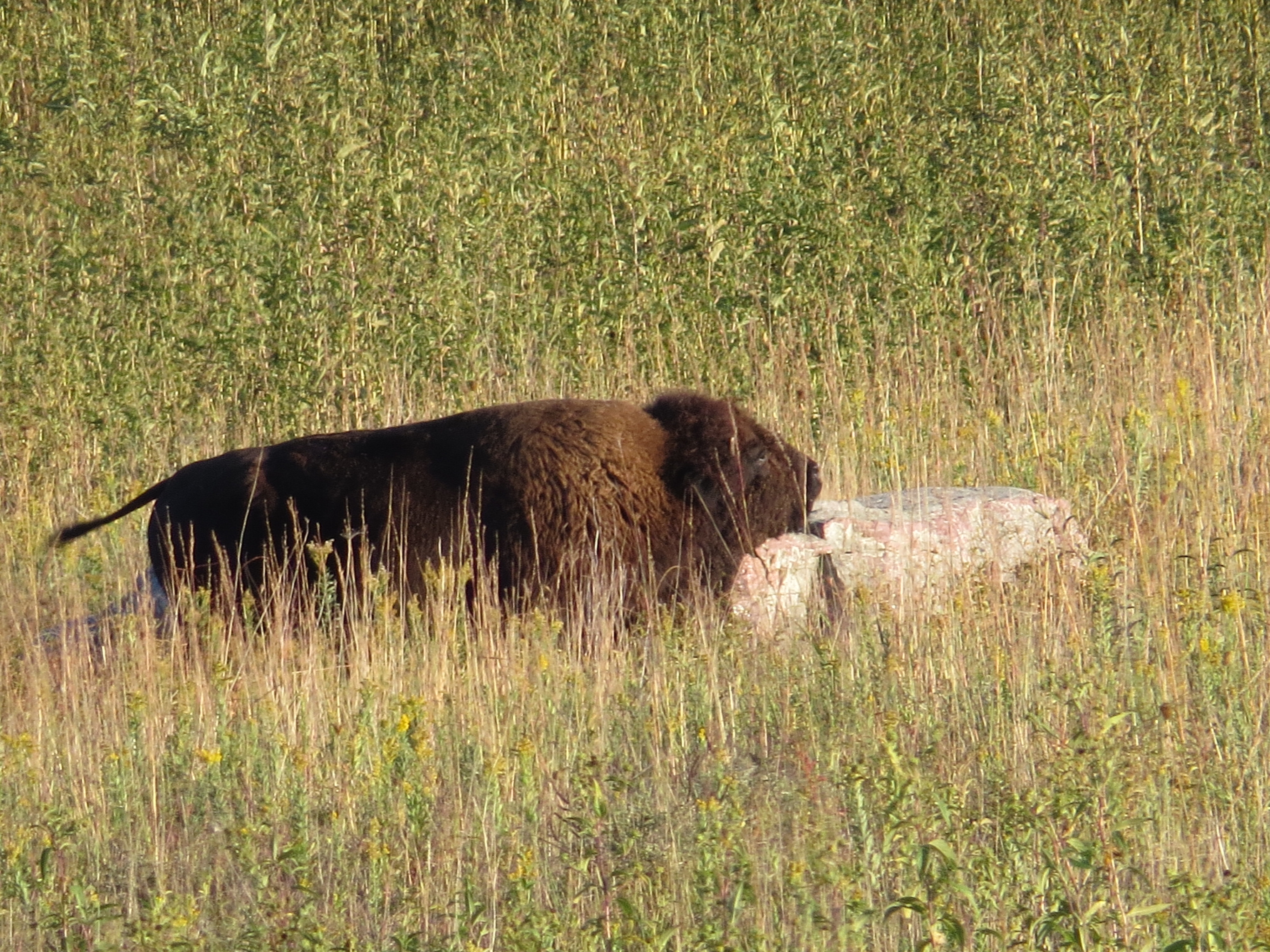
Another way bison scratch is using a buffalo wallow in the dirt. They may rub their heads or actually roll in the dirt to help with shedding, to get relief from biting insects, or to cool down in the heat.
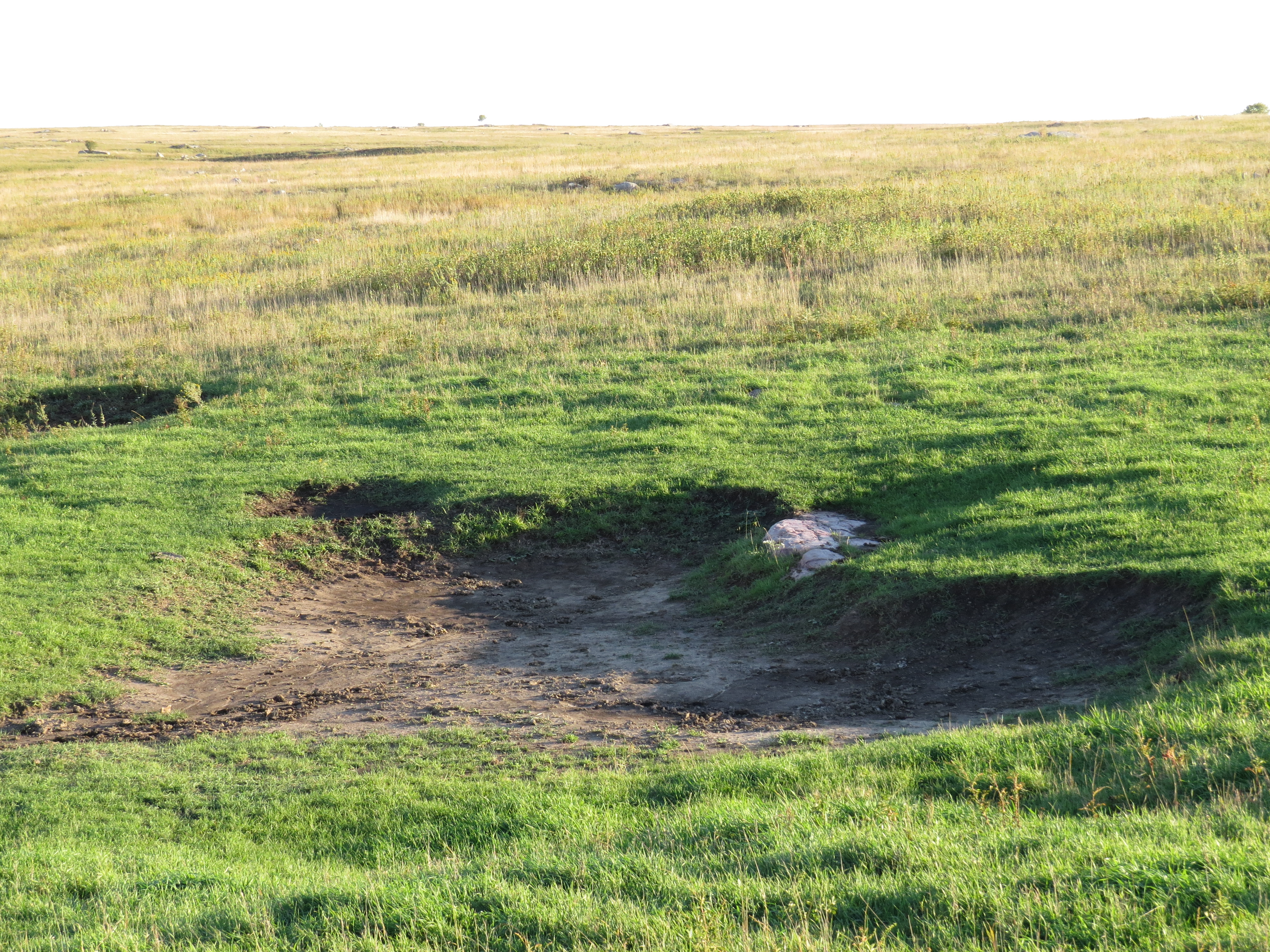
Officially, these animals are American Bison—Bison bison as genus and species. But many of us call them buffalo. When the French fur trappers came here in the 1600s, they called them “boeuf” because they looked like the buffalos of Asia and Africa (Water and Cape Buffalos). I tried to call them bison for the weekend, to get my brain and mouth re-trained, but my default is still ‘buffalo.’

Gestation for a bison is 283 days—9.5 months—and the calves are 25-40 pounds at birth with a reddish-brown coat that darkens with age. So even by September, they have coats like their parents, and only size helps to identify them from far away. They are also growing horns already—both males and females.



As we watched, the bison peacefully grazed across the pasture and up the hill, disappearing over the horizon. They graze for nine to eleven hours each day, year round, using their massive heads to move snow aside, if need be.

The earth supported their huge half-ton to ton bodies. Bluestem grass, along with other prairie grasses and wildflowers, is the staple for nourishment to sustain their large frames.
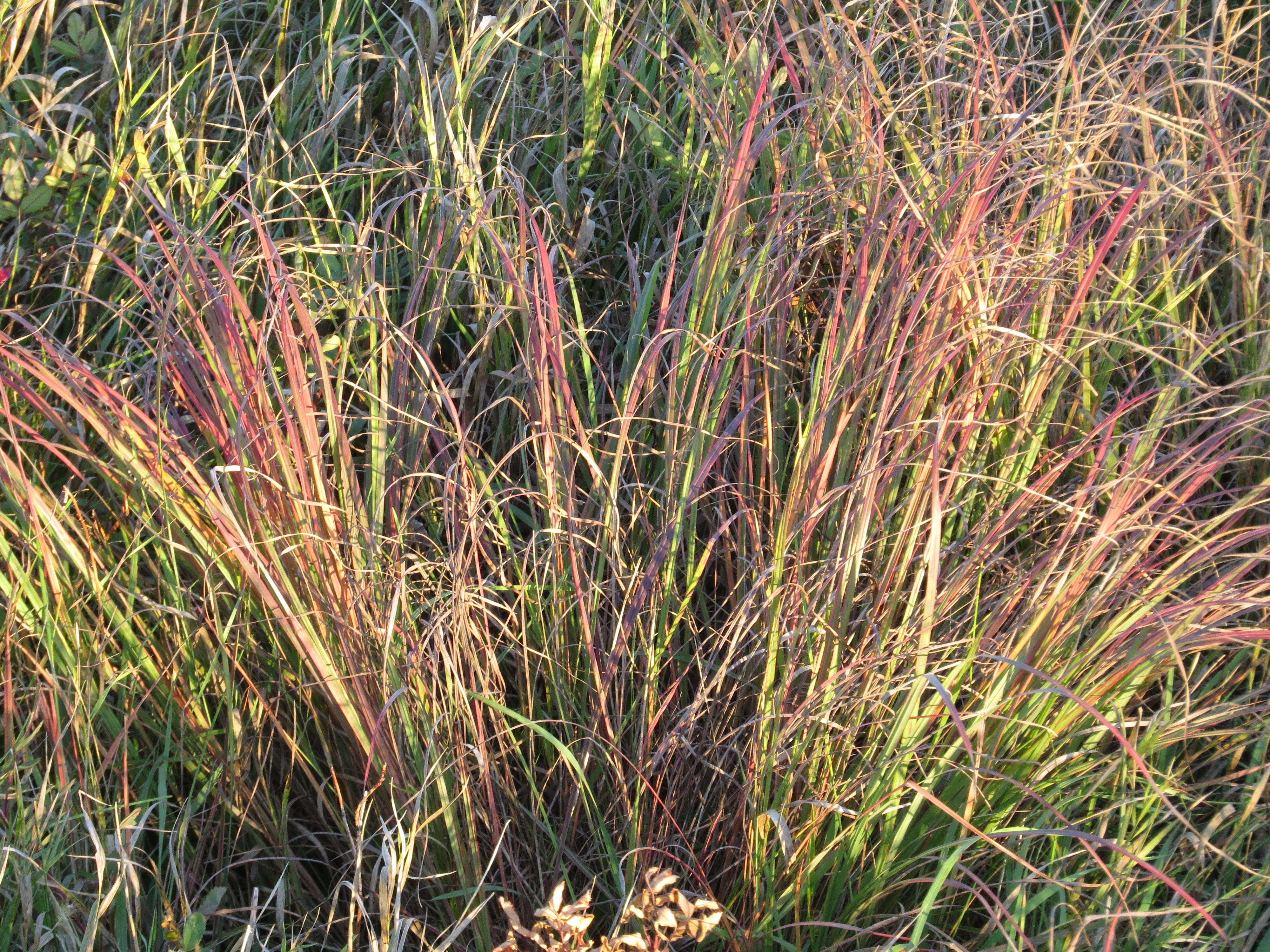
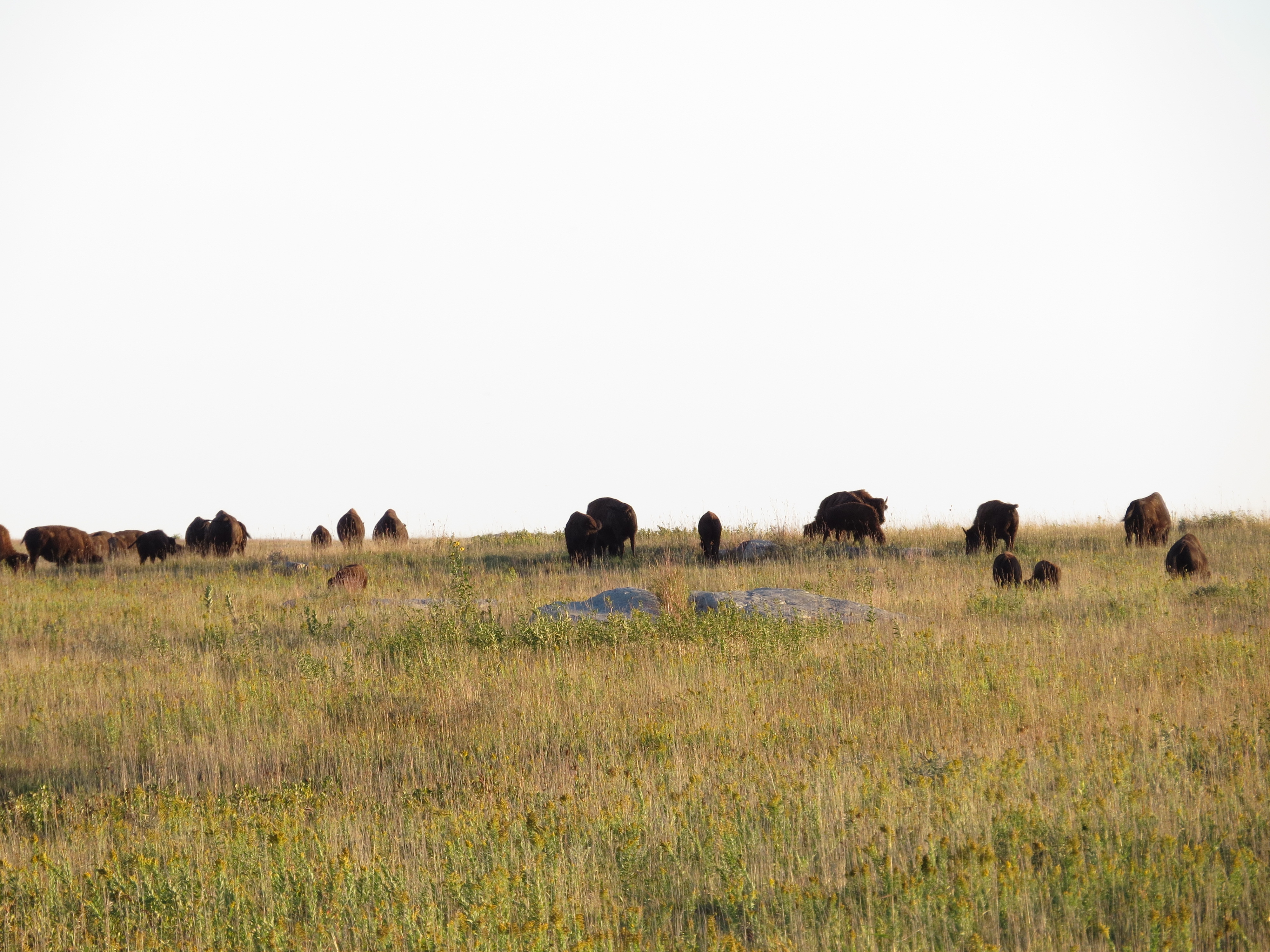
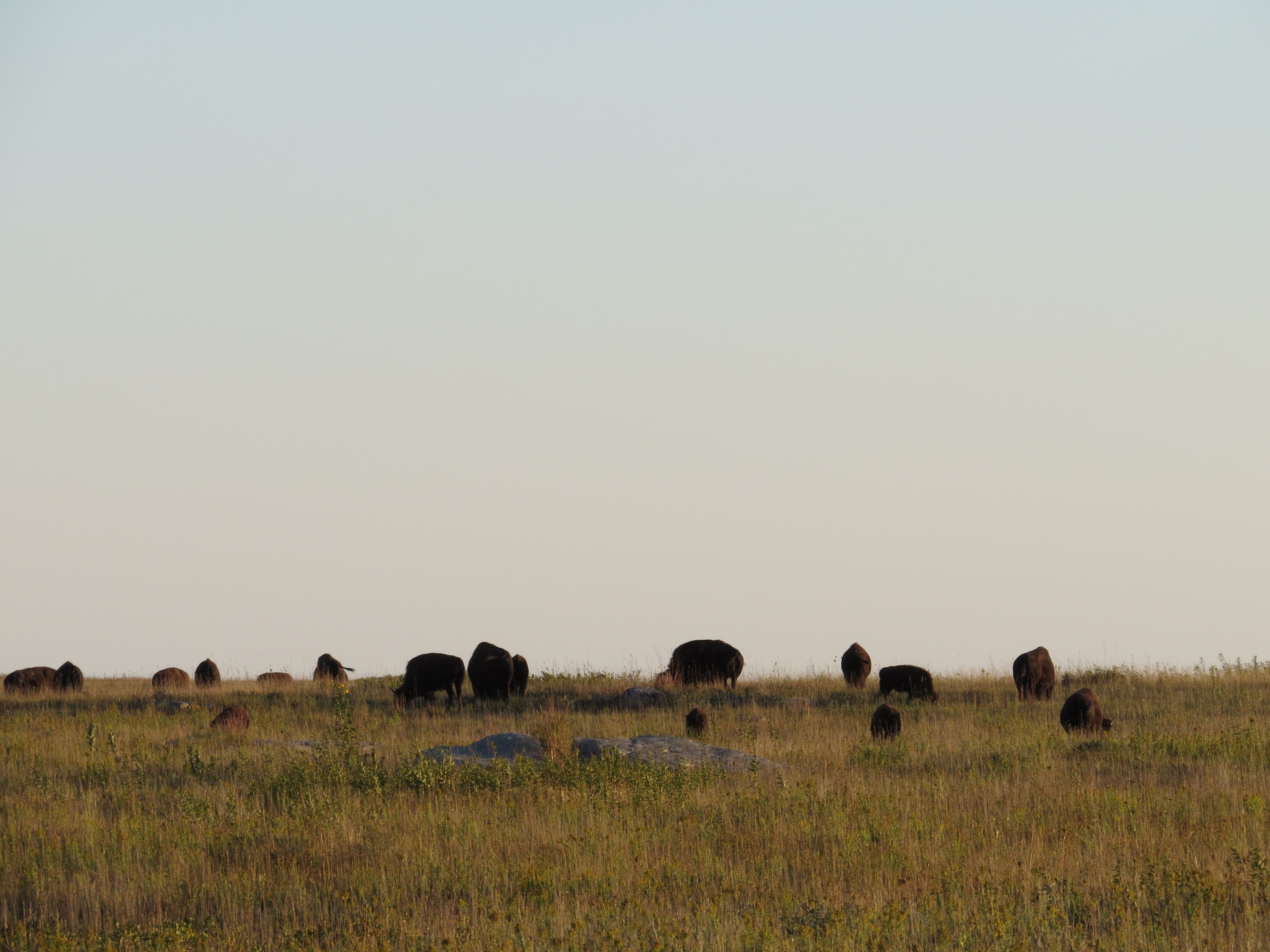
As the sun sank in the western sky and the bison grazed away from us, a flock of blackbirds swooped across the sky, and a pheasant rooster squawked and ran through the grass. Deer leapt across the prairie, their coats burnished by the setting sun. And the nearly-full moon revealed itself as the sky darkened.
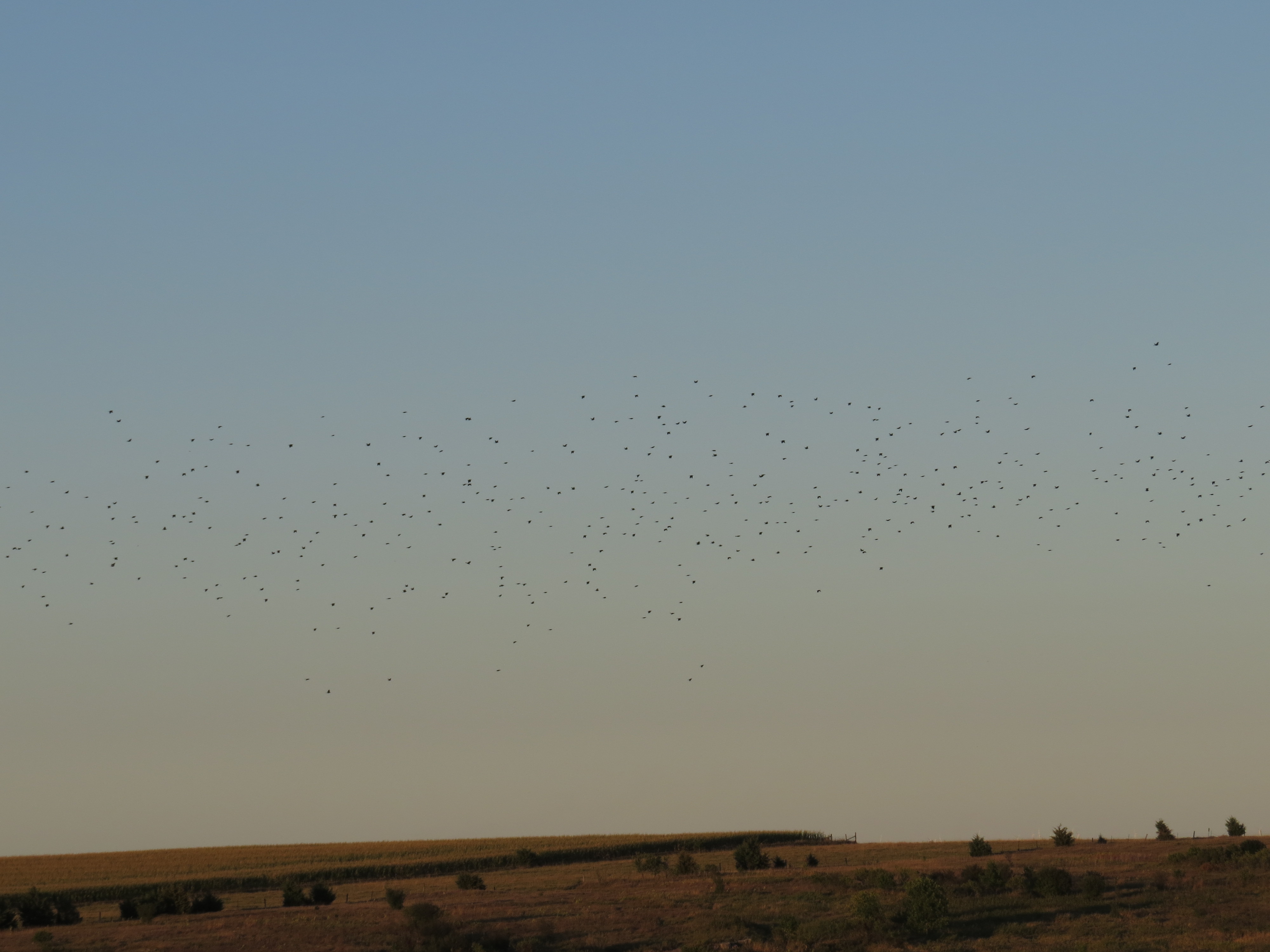
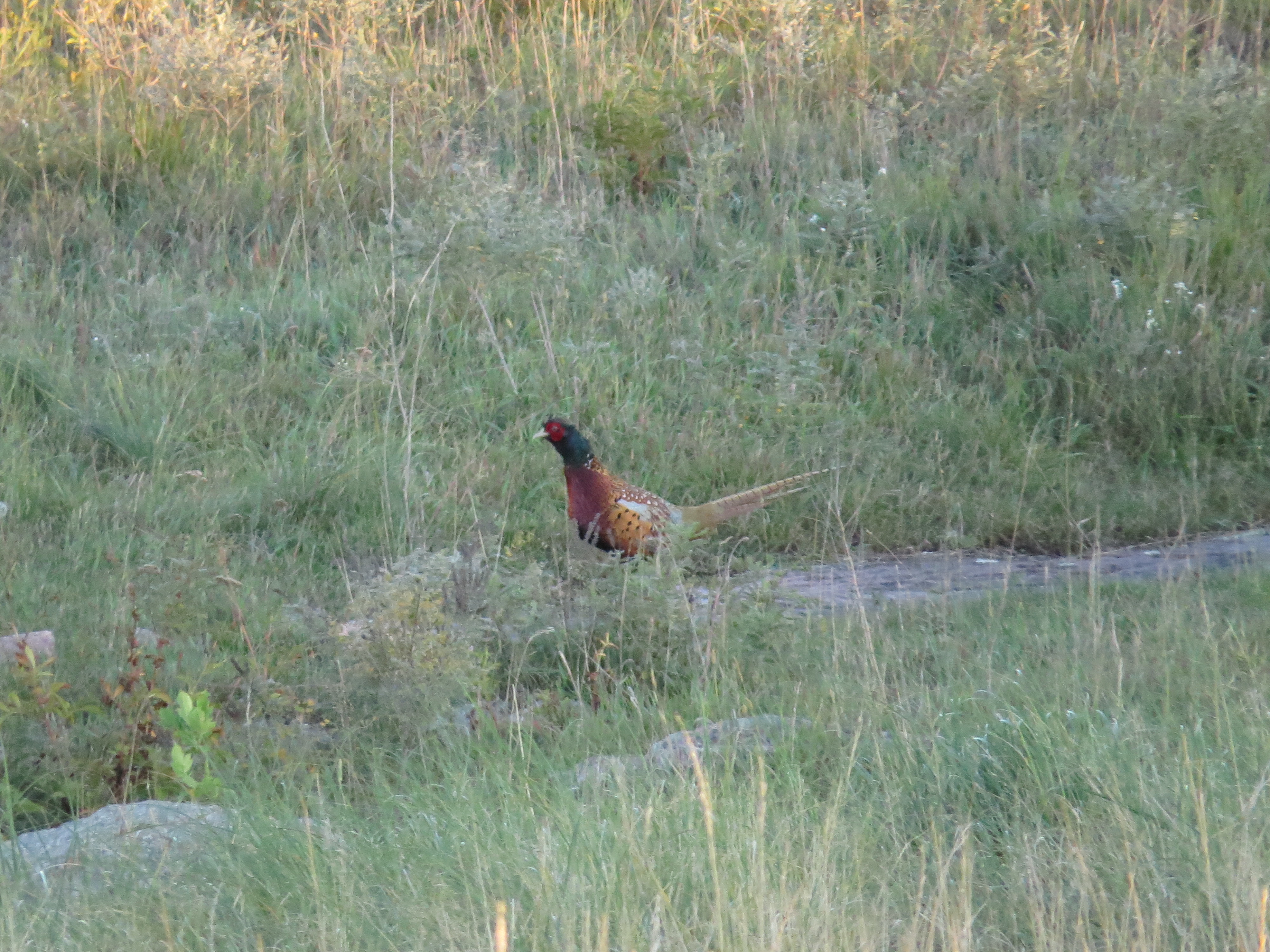
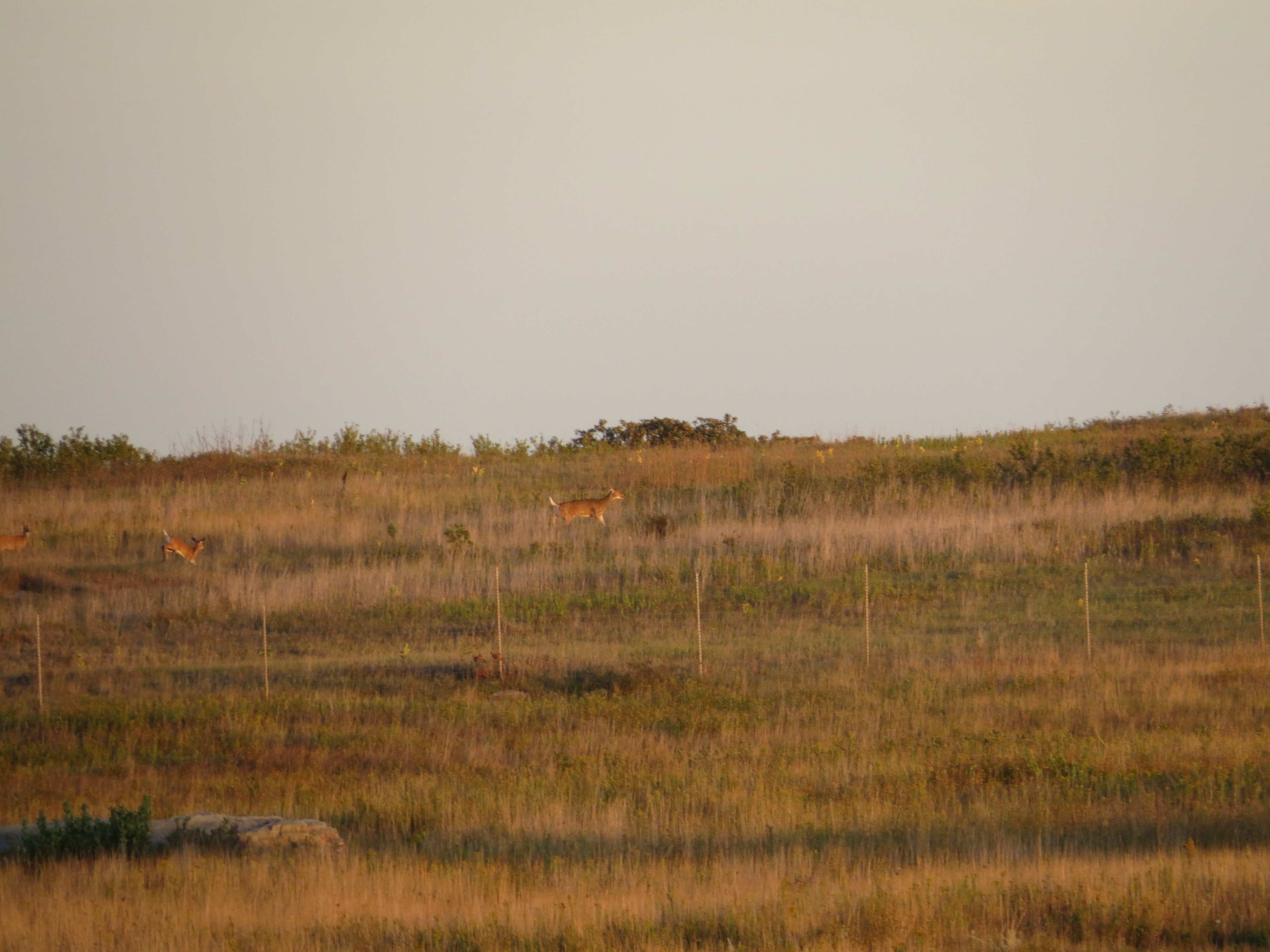
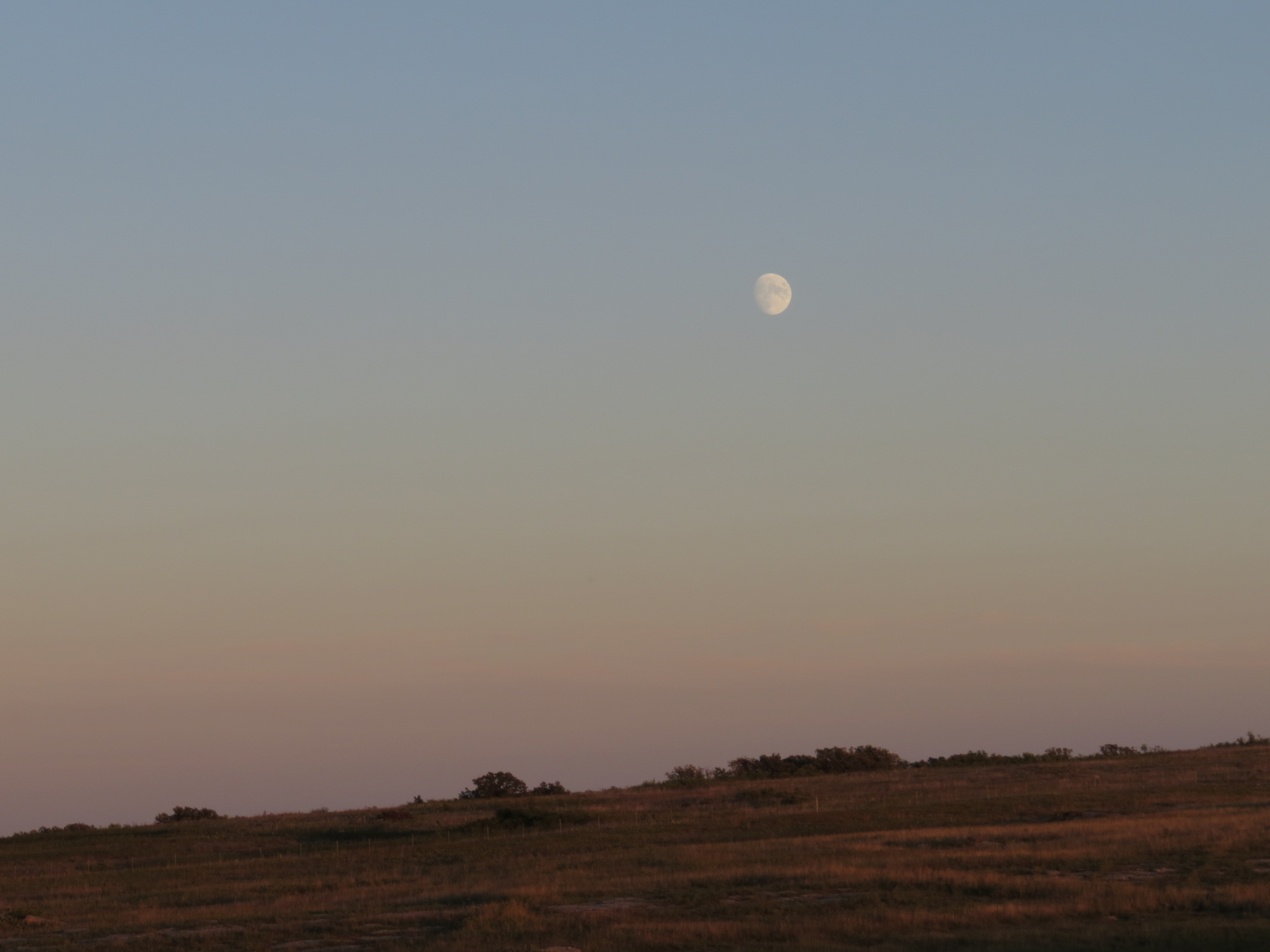
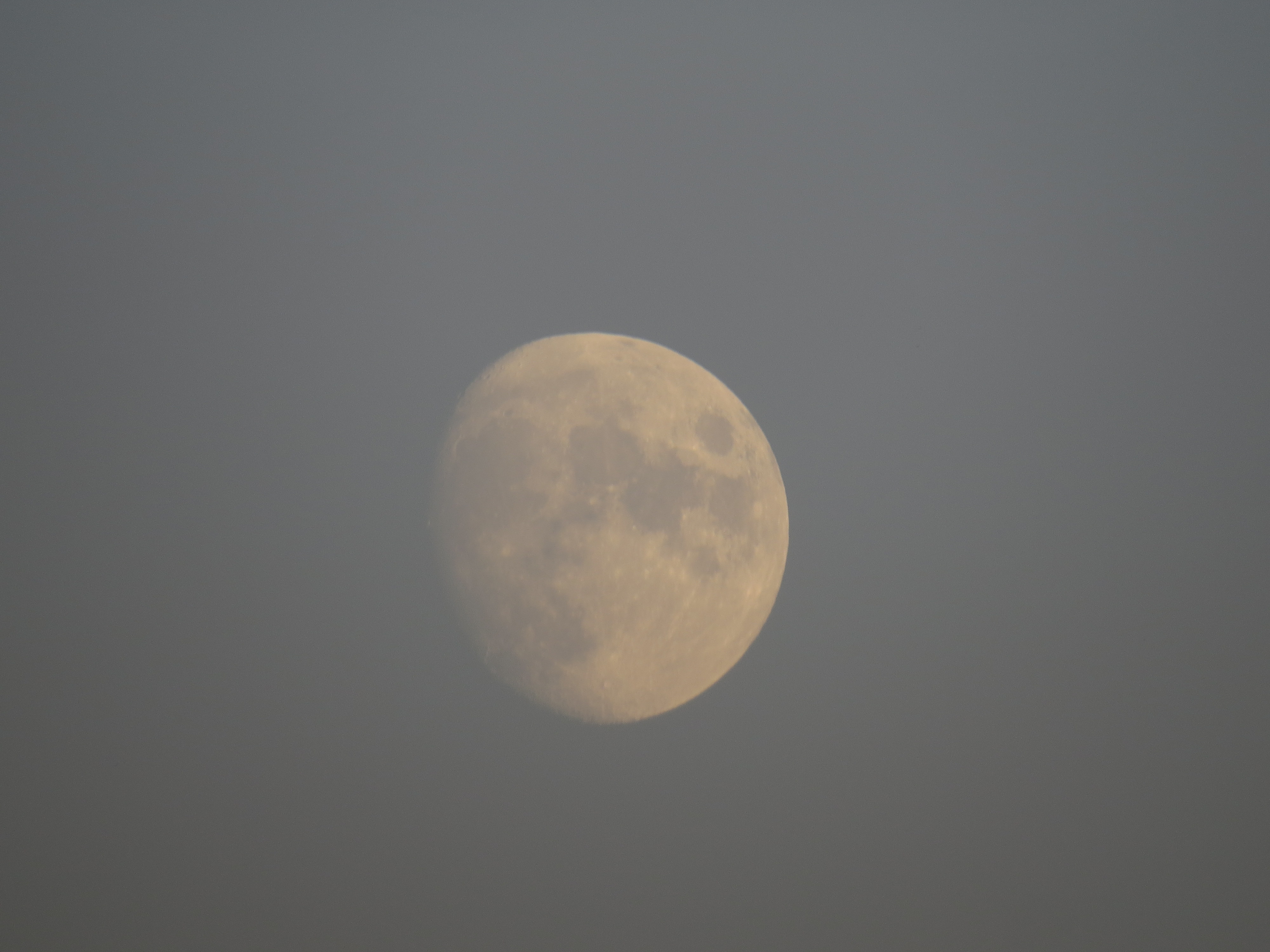
Back at our campsite, we heard where the blackbirds were settling for the night—that ‘field’ of cattails by the lake behind us. The chorus of their chattering continued long into the darkness. More geese flew in to Upper Mound Lake, their ‘Aquabnb’ for the night. We heard some rattling calls from the heron who may not have been so happy to share ‘his lake’ with all the others.
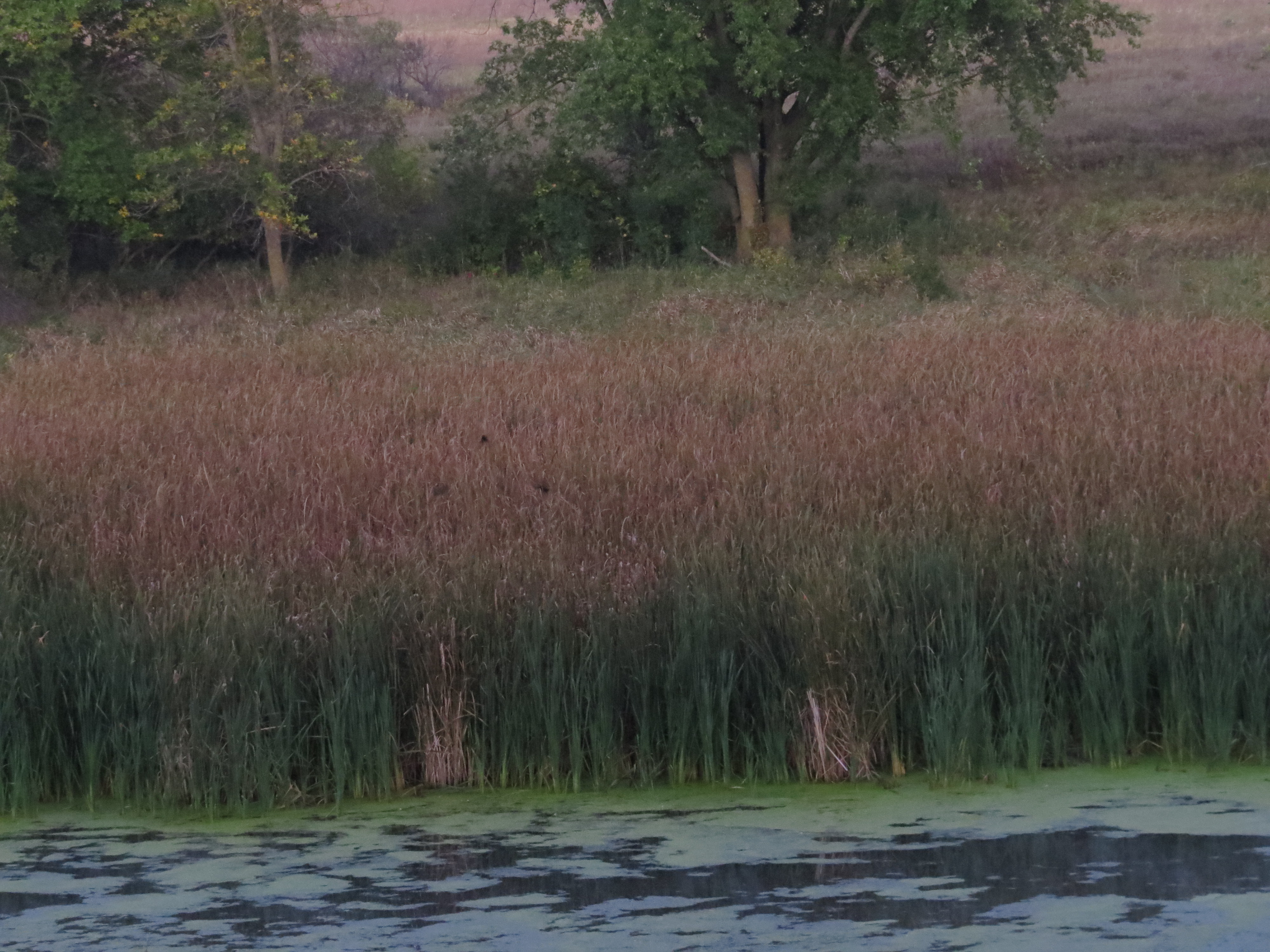
In the dusky light, the red rock cliff had a pink and purple glow about it—the firm terra at the edge of the fluid aqua.
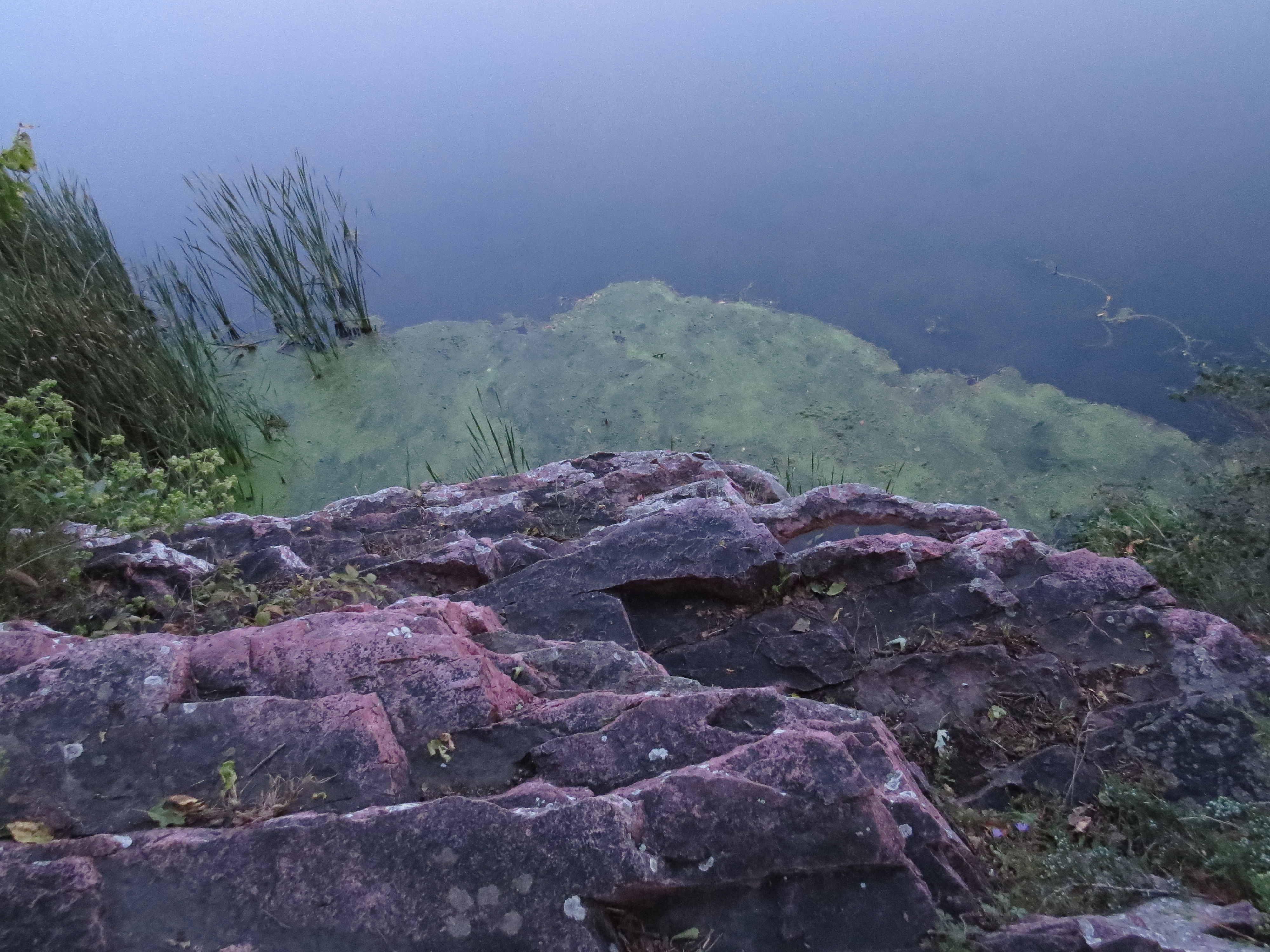
The environments themselves—terra and aqua—are incredibly diverse—the number of different species of grasses and perennial wildflowers in a native prairie is in the hundreds, if not thousands. The lakes and streams support the same diversity of aqua species. But the showstoppers of our weekend at Blue Mounds were the birds of the lake and the bison of the land. Both were enchanting. When was the last time you were enchanted? And what was the source of that enchantment? Was it a temporary ‘high’ or a deeply satisfying ‘knowing’ that you were experiencing a bit of magic? The aqua-creatures and the terra-creatures were captivating, especially the heron and the bison. The source of that enchantment was Mother Nature—the creator of all that sustains us, all that supports us, and all that flows within us. Peace.